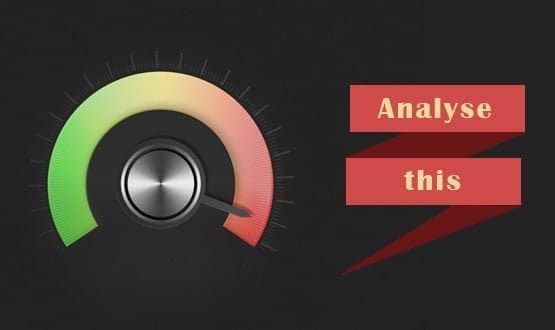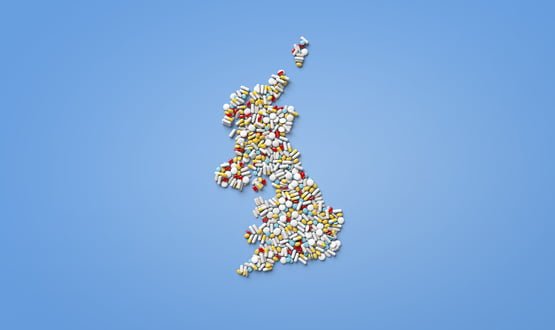Analyse this
- 7 May 2013

There are some things you can never have enough of – for me, it is shoes. However, one thing you can have too many of is dashboards – yet there are people who just can’t get enough of them.
“We need a dashboard” … “do you really???”
Sometimes, I wonder if people know the purpose of a dashboard. I certainly wonder why oh why so many people keep asking for a dashboard. They seem to be demanded for every single thing, including things that can’t be measured.
Is it just me that gets annoyed by the incessant requests for dashboards; or is that something you can relate to as well?
Let your dashboards do the walking
When I started working at a previous trust, I asked for a copy of all of its dashboards. To my astonishment, I received back a pile of printouts as thick as a copy of the Yellow Pages (before they became electronic).
It didn’t help that there were different dashboards for each of the clinical divisions (of which there were seven). And, of course, there was no consistency about how things were reported across them.
Added to that, were the slight variations in the indicators, depending on who had requested them or the committee at which they were being presented.
Measuring multiple indicators against multiple targets/ thresholds no doubt led to differences in the figures; which no doubt led to a culture of undermined confidence in information.
All these hundreds of dashboards were created in Excel. So you can imagine the amount of time my team had to spend on them. This was no good for them; nor was it of value for the organisation.
Time to cull
I sat there in my office with all these dashboards separated into groups and thought: ‘There is no way we are going to, or that we can continue with this.’
So, we painstakingly reviewed each indicator and each dashboard to see how they were calculated and whether they were actually required.
We managed to get them down to a manageable number. However, it was still taking far too much time to produce them each month, leaving no time at all for analysis. I needed a solution and fast.
Fast forward to now…
When I arrived at Bedford Hospital, I once again asked for a copy of all the dashboards. This time, there aren’t as many. Phew!
However, this time round I found myself thinking ‘I need to create a new dashboard, as we haven’t got enough!’
To get something in quick and useful, we created a weekly dashboard in Excel, with core KPIs (key performance indicators) and a simple visual look of performance.
Clearly, using Excel for dashboards isn’t brilliant – and there are so many other tools that can be used. We already have Qlikview in the trust, so I’m now looking at how we can utilise it better.
(Note to any recruitment consultants out there reading this – I’ve been inundated with calls and CVs, already; and, thank you, but I’m not looking for any agency cover at the moment).
The trust started on some Qlikview developments some time ago, but for some reason they just didn’t take off. Being an experienced use of and (I guess) a fan of Qlikview, I needed to know what had gone so wrong.
So I started to look at the reports. Some were ok but others, even to my trained eyes, were just baffling. It’s that not so wonderful thing… too much data and not enough information.
Looking for a true reporting framework
So the journey began (again) for us to create a true reporting framework. First steps were to identify what we need to report and how this needs to be presented.
We decided to stick with Qlikview and use some external consultancy to provide a structured and tailored method of reporting. I’ve decided to rebrand our reporting and business intelligence (along with re-designing and re-creating some!)
Where to start? I decided to go with a trust level performance dashboard and then A&E as a separate section. We’ll later be adding in RTT (referral to treatment time), theatres and cancer as separate sections, too.
So far we’ve got a specification for A&E finalised with enough KPI’s to enable a clear view of performance and operational pressures without overloading with data.
The development of the dashboard is beginning this week, so fingers crossed it’s going to be an easy and useful start to our BI developments.
My apprehension is more with the performance dashboard. With the requirement to monitor such a vast number of indicators, it’s going to be a challenge stopping this becoming unruly. But that is one of the things I love about my job!
There are good dashboards; you just have to design them
My view is that a dashboard should be easy on the eyes, tell you very quickly if you have an issue (good, bad, could become bad in the near future) and an indication of whether or not it is improving or deteriorating. It has got to be simple and easy, highly visual – and tell you just what you need to know.


Aasiya Moreea
Aasiya Moreea is a health informatician; currently assistant director of clinical information and business intelligence at Bedford NHS Trust.
Aasiya has expertise across all Informatics areas, with a special interest in business analytics and performance frameworks, particularly focusing on performance, quality, and patient safety metrics and also service line reporting.
Aasiya has led health informatics within a number of NHS trusts over the past ten years (both foundation trust and non-foundation trust). She is a published writer and also works with CIMA to provide training courses on various areas within finance and informatics.




